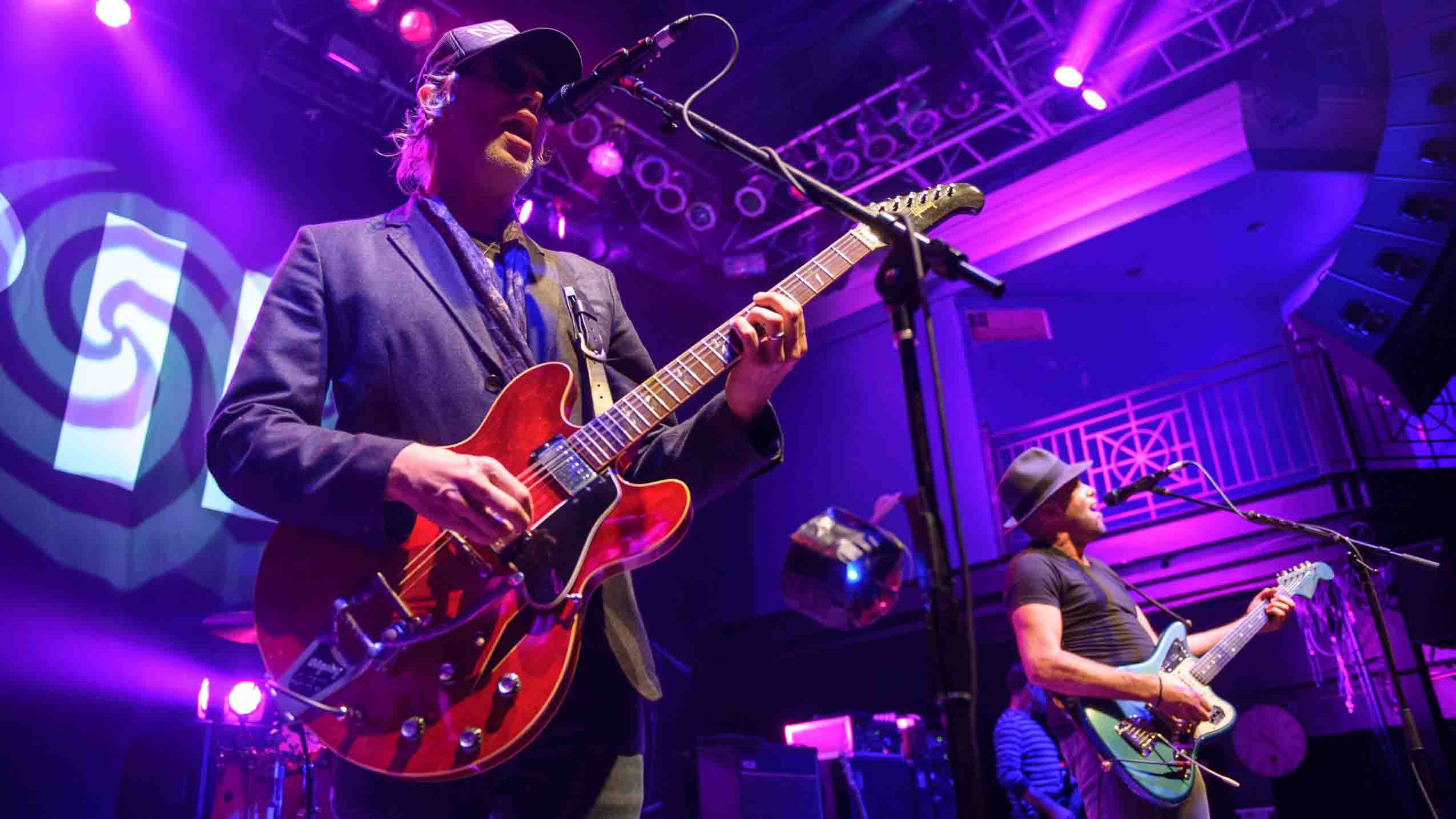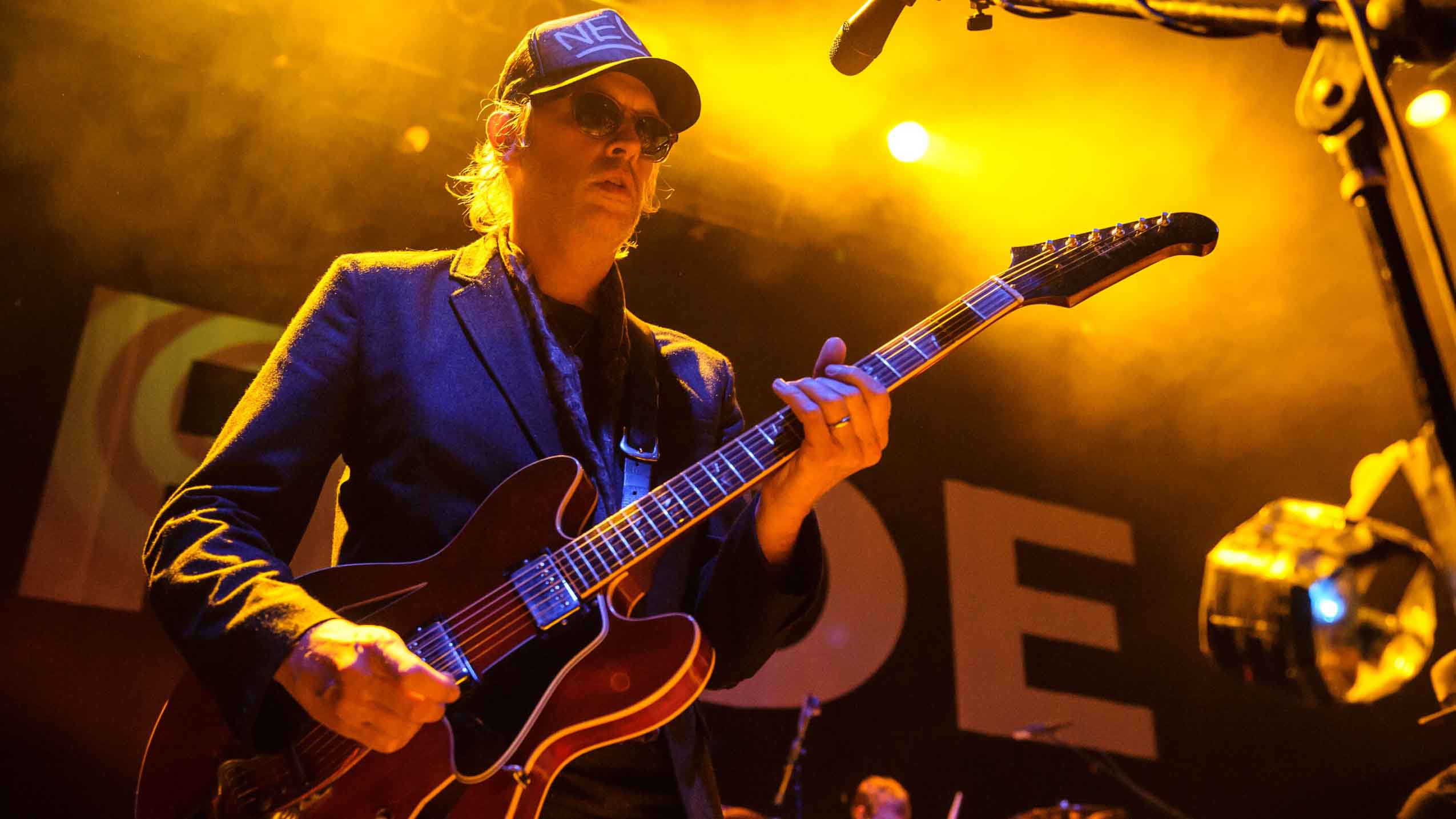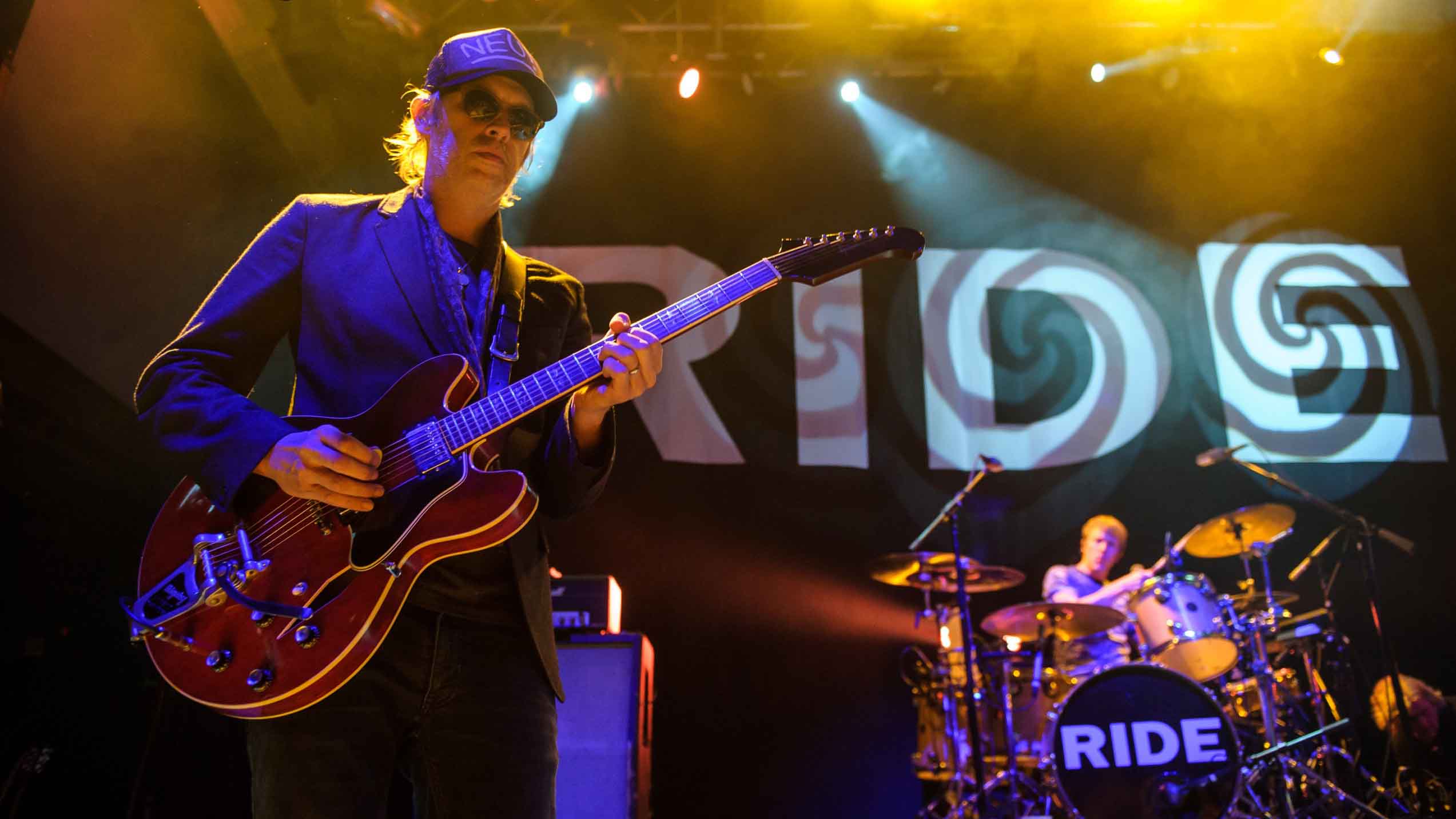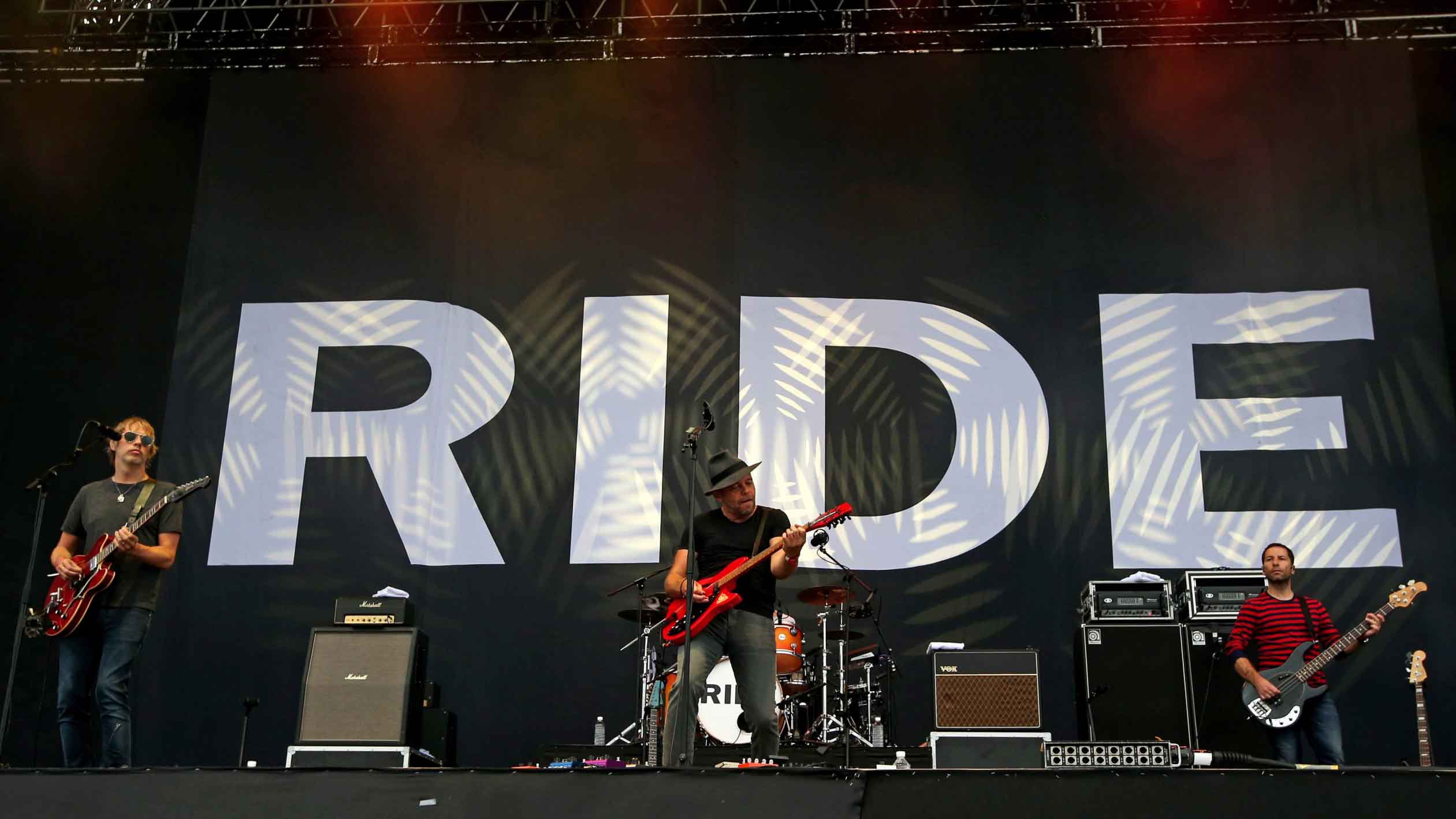Ride's Andy Bell: my top 5 tips for guitarists
He's strutted his stuff with Oasis, Beady Eye and the newly reformed Ride, and now Mr Bell shares some of his trade secrets

Introduction
For over 25 years, Andy Bell has been captivating indie-rock fans the world over with his top-notch effects-driven guitar-playing and enviable knack for writing killer tunes.
As a decade-long member of Oasis, Bell spent the majority of his time playing bass, but he also penned a handful of songs across the band’s final three studio albums, as well as contributing the odd dash of rhythm guitar.
When Oasis disbanded in 2009 and morphed into Beady Eye (minus Noel Gallagher), Bell once again picked up the six-string and assumed shared songwriting duties.
However, when Liam Gallagher called time on Beady Eye at the end of October 2014, it proved the perfect catalyst to reunite Ride, the hugely influential Oxford shoegaze band that Andy had formed with Mark Gardener back in 1988.
Since playing their first reunion show back in April, Ride have toured extensively across the UK, Europe and US and will be back gigging on home soil until the end of October.
Before taking MusicRadar’s readership through his top five tips for guitar playing and songwriting, Bell reflects on how the reformed four-piece have been gradually varying their set lists from show to show and digging into increasingly elongated jams.
“In the beginning of this reunion, the setlist wrote itself, because we knew we had an hour and 15 minutes and there was an A-list of songs that we just couldn’t miss out,” explains Andy.
“But we also made a B-list and a C-list of obscure ones going right down to a Q-list or something! One thing we’ve been doing since the start is that whenever we've got a soundcheck, we’ll try something different and try and fit something new in.
“We started changing up a song every gig and, for example, doing a song that we knew hadn’t been played in that country before. We’ve also had a couple of goes playing the song Nowhere, which is very freeform. We played it in Amsterdam – naturally – and then we played it in San Diego at this weird outdoor gig by the sea by a marina.
“It was an incredibly beautiful setting and it felt right and so we ended up doing a really chilled version for about 20 minutes and it eased us into the set. There should really be a live album of versions of Nowhere by the end of the tour, each in a different exotic location and each different every time!”
Ride UK tour
O2 Academy, Brixton (14 October); O2 Academy, Liverpool (15 October); Anson Rooms, Bristol (17 October); O2 Academy, Newcastle (18 October); Corn Exchange, Edinburgh (19 October); Rock City, Nottingham (21 October); Institute, Birmingham (22 October)
In addition, Ride’s landmark 1990 debut album Nowhere is being re-issued as the expanded Nowhere25 package on November 6th. It includes a DVD of their March 1991 Town & Country Club show.

1. Playing other people's songs will help your writing
“I read something Bob Dylan once said about songwriting, which was really cool. He’s got a little grab-bag of traditional songs he sits and plays when he’s writing. I don’t know what these songs are but they’re probably things like She’ll Be Coming 'Round the Mountain and other old folk tunes! Bob says he’ll sit and play a tune over and over again and just sort of go into a bit of a meditative state. He’ll drift away a bit and start playing something else, which he’ll then zone in on to try and make that into a song.
“That happened to me with Seagull [opening track from Ride’s debut album, Nowhere, 1990]. I was sitting down and trying to learn The Beatles’ version of A Taste of Honey, which has those very dramatic McCartney-esque chord changes. If you listen to the verses of Seagull, it is sort of like that, or me trying to do that, anyway. Because I couldn’t get it quite right, I just started making my own song instead, and that became Seagull.
“When I read that Bob Dylan quote, I just thought, ‘Oh yeah, I did that once… and that could be a good technique for writing songs again!’ That’s a good tip. Try that. Play a song you like and keep playing it until it changes, and then zone in on the changes and make that into a song.”

2. Experiment with different tunings
“Playing around with different tunings has always been good for me as a guitarist. Nick Drake was someone who was a real mindblower because of his acoustic open tunings and what he did with them.
“You should definitely try lots of different open tunings. You can tune all the strings to two different notes and then play normal chord shapes over those notes. I’ve done that a few times.
“With the song Birdman [from Ride’s third album, Carnival Of Light, 1994], the tuning just has the high E dropped down to a D and then I played regular shapes over it. That’s what the riffs are, and it sounds different because it’s detuned, but the shapes are all normal.
“The Ride song Tongue Tied [included on OX4: The Best Of Ride] has a tuning that I made up and it’s a really weird one. You have to be very careful what you play and what you don’t play with that one. We’re just learning it now because we’re going to start playing it again. I think it’s D G D F# A D, and it’s a mad one!”

3. Try to play something that wasn't written on a guitar
“I did this with Golden Brown by The Stranglers, which was written on a harpsichord. I was trying to work that out for ages and eventually I managed to do it but I think I drove everyone in Oasis mad in the process! For a whole Oasis world tour, it was like ‘What’s going on?’ as I was sitting in the dressing room driving them all nuts with this fucking Golden Brown all the time!
“It can be really good for your playing to try and play something that wasn’t done on the guitar because it can lead you to different places. In fact, playing an unfamiliar instrument can also work as a tip. Sit and play a keyboard or something you can’t already play and you’ll always get a song out of that process. A new bit of gear or a new gadget will always give you a song.”

4. Learn the entire works of your favourite artist
“Donovan mentioned this in his autobiography. He talked about learning the entire works of your favourite artist or properly sitting down and studying every song by someone that you really respect.
“I haven’t quite done this but I’ve attempted it. For me, it would be The Beatles, and that’s quite a tall order, really! It’s probably more of a songwriting thing in a way, but it can also be useful for playing guitar.
“When I lived in Sweden, I had a recording studio at home, and I’d do the school run and come back and record there all morning. If I didn’t have a particular idea myself, I’d just work on reproducing an entire record. I did Fool’s Gold [by The Stone Roses], I did 1 Thing by Amerie and I did Spanish Castle Magic, Little Wing and All Along The Watchtower by Hendrix. I did loads of Hendrix stuff, and I still use it in my playing when I’m just jamming around.
“I’d say Jimi Hendrix qualifies as a tip on his own because his guitar playing is so different to everyone else. He makes these leaps with his fingers, which make his regular blues runs different to everyone else’s. Sit down with the Jimi Hendrix catalogue and try to learn a few good tunes. I guarantee it will change your playing in a good way…”

5. Don't be worried about leaving space when you're writing
“Just let the random stuff in and allow space for it! Ride was always big on allowing space for things to happen and that’s how you got things like the noise section in Drive Blind [Ride EP, 1990]. That’s great because it can be whatever we want it to be when we play it live.
“Another song Grasshopper [B-side to Leave Them All Behind single, 1992] was always just a riff at the beginning and a riff at the end and in between – again – we can just play whatever we feel. We built different possibilities into the songs to keep things fresh.
“The Beatles did that when they were doing A Day In The Life. They had that section that they hadn’t really worked out yet. It was like, ‘We'll put something in there later!’ and that’s what became the orchestral climax.”









